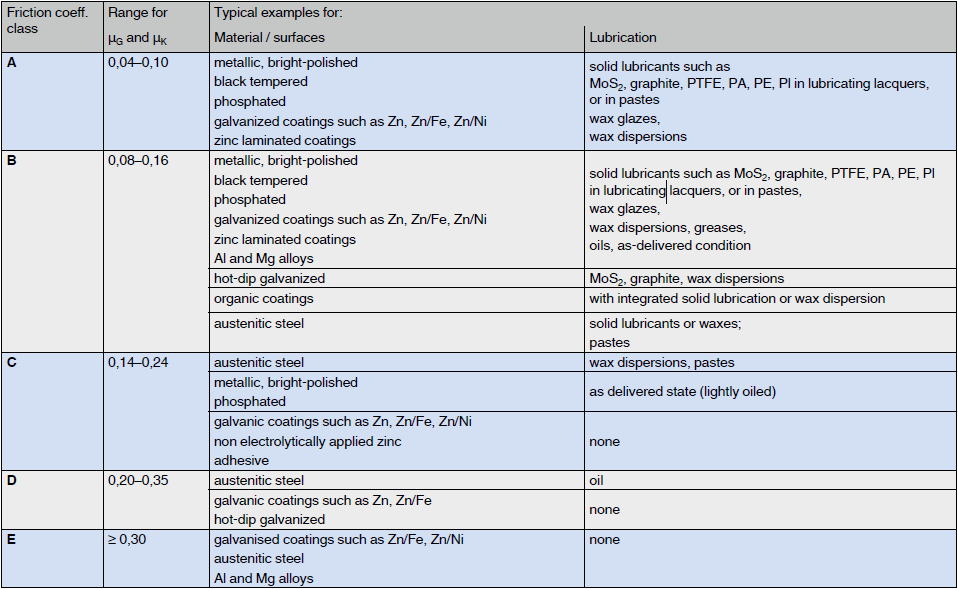Friction and Friction Coefficients
For the purposes of this blog post, we’ll be covering the relation of friction coefficient classes to guideline values for materials/surfaces and types of lubrication, and for screw connections.
There are variations of friction coefficients because they are dependent on multiple factors. Those factors include the material combinations, the quality of the surface finish or depth of roughness, the surface treatment, and the method of lubrication.
Why is this important? Because the conditions for friction need to be precise and the variations restricted as much as possible. All factors need to be considered for a securely fastened joint.
See the table below for friction coefficients for threads and for bearing surfaces. All of the data collected here is valid at room temperature.
Need to know more about friction and friction coefficients? We’d love to chat in further detail! Contact us at ProvenProductivity@bossard.com to start the conversation.
Friction and Friction Coefficients by Bossard





